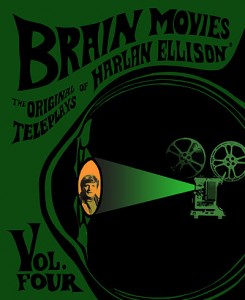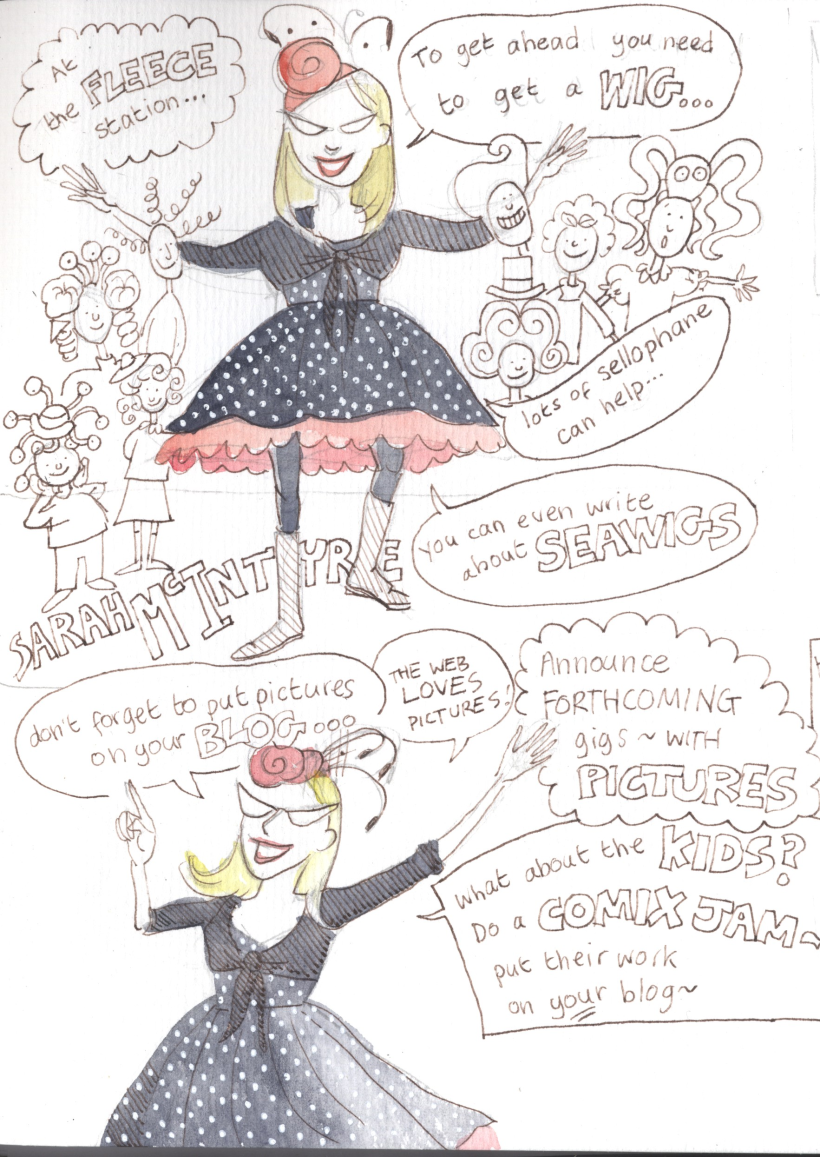I’m waiting to see Guillermo del Toro’s next movie to discover why the best military answer for something like Godzilla is a giant robot that socks him in the jaw.
[Thanks to John King Tarpinian for the link.]

I’m waiting to see Guillermo del Toro’s next movie to discover why the best military answer for something like Godzilla is a giant robot that socks him in the jaw.
[Thanks to John King Tarpinian for the link.]
Jane Fancher, C.J. Cherryh, and Mercy Briggs appear in a new video extolling the virtues of the city of Spokane as a site for the 2015 Worldcon.
Crystal Huff went to Finland for Acon and used the opportunity to shoot brief interviews for a video promoting the Helsinki in 2015 Worldcon bid called “Meet the Conrunners of Finland.”
I found the first segment hard to follow, perhaps because it was recorded in front of a glass wall that distorted the acoustics, but the others came out okay.
Myke Cole’s novel Control Point has won the 2013 Compton Crook Award. The presentation was made May 24 at Balticon – click here to see Cole in dress blues holding his plaque.
The Compton Crook Award honors the best first novel of the year written by an individual author (collaborations are not eligible) in the SF/fantasy/horror genres.
[Via Locus, Amazing Stories and basically the rest of the internet.]
A trip into space with Leonardo DiCaprio sold for £1.19 million at an AIDS research fundraiser held during the 2013 Cannes Film Festival.
A seat beside The Great Gatsby actor on Sir Richard Branson’s Virgin Galactic space flight was auctioned at amfAR’s 20th annual gala. Seats on these flights, which Virgin Galactic hopes to commence by the end of 2013, usually sell for £132,406.
After winning, Monaco based Russian estate agent Vasily Klyukin, 37, said: ‘I want to be a bit daring. I will have to give up smoking now for sure!’
Whether the winning bidder wants the company of a wealthy charmer, the assurance of riding with a great aviator, or advice from a capable coach in the event of a wreck, we know DiCaprio has flourished in all three roles.
[Thanks to David Klaus for the story.]
Two new volumes of Brain Movies featuring unproduced series pilots created by Harlan Ellison have been released in time for his 79th birthday on Monday, May 27.
Brain Movies III contains Cutter’s World, a two-hour 1987 pilot for a Western-tinged science fiction series for CBS:
[It] tells the story of guilt-ridden 20th century astronaut Ben Cutter’s journey to an alien world, where he and his twelve-year-old son, Mac, must carve out a life for themselves in the perpetual twilight of a world inhabited by two species in conflict: the humanoid vivo, and the kyben (the recurring beings featured in Ellison’s Night and the Enemy story cycle).
The original Michael Whelan cover art was recently purchased by Harlan to adorn a wall at home.

Brain Movies IV boasts:
READ THE BASIS FOR ELLISON’S FIRST GROUNDBREAKING PLAGIARISM SUIT: Brillo, the two-hour ABC pilot based on Ellison and Ben Bova’s short story of the same name, was the impetus for the author’s first plagiarism lawsuit. At long last, Ellison aficionados can now see how the story of a (then-futuristic) 1990s beat cop teamed with the latest in law enforcement technology (the eponymous robot) would have played out on the small screen had not the network passed on the series. For fans of the absurd, some of the “suggestions” issued by ABC Broadcast Standards and Practices are recounted in the editor’s note.
Along with the pilot teleplay come several pages of Ellison-commissioned concept art for the Brillo robot drawn by Frank Kelly Freas.
Volume Four also contains Ellison’s second Burke’s Law script, “Who Killed Purity Mather?” An accompanying editor’s note recounts how Ellison lured the elusive Gloria Swanson down from Sunset Boulevard to appear in her first television role.
Weekend Sale Extras: Those who order Volume Three by Monday, May 27 will receive 90 pages of bonus material, the first draft of Cutter’s World, featuring a different version of the third act with a subtler take on the series’s ongoing antagonist.
And those who purchase Volume Four by the deadline will receive a revised draft of Brillo, which condenses the narrative, conflated characters, and eliminated elements found in the first draft. A version of this draft is what would have eventually been produced if the project had not been derailed.
[Thanks to John King Tarpinian for the story.]
Artist Róisín Curé drew throughout the first meeting of Laydeez do Comics – Dublin. Below is one of her illustrations. Several more appear in “The first meeting as drawn by Roisin”.

[Thanks to James Bacon for the story.]
Freeman Dyson has been a household name in Los Angeles sf fandom since he provided the inspiration for Larry Niven’s Ringworld, but that represents only a narrow slice of his life’s work. Dyson, born in England in 1923, began his career as a mathematician before turning to physics in the 1940s. His papers on the foundations of quantum electrodynamics have had a lasting influence on many branches of modern physics. He went on to work in condensed-matter physics, statistical mechanics, nuclear engineering, climate studies, astrophysics and biology. He even received the Templeton Prize for Progress in Religion (2000).
Standing at the lectern, Dyson appeared a coil of energy with mischievous eyes.
“Saving society through engineering – I’ve always believed in that,” he said to someone aside. Then he launched into his presentation, rapid-firing ideas at a rate that hardly slowed for the next 45 minutes.
Dyson proclaimed we are now at the beginning of a revolution in space technology, when for the first time cheapness will be mandatory. “This is bad news for something that requires the investment of the Apollo Program. It is good news for people who will develop these technologies…. Cheapness now has a chance.”
Cheap manned missions will require new biotechnology, to survive after we get there. (“There is no future for humans tramping around in clumsy spacesuits on lifeless landscapes of dust and ice,” says Dyson in his Starship Century article.)
“My guess is that the era of cheap unmanned missions will be the next fifty years, and the era of cheap manned missions will start sometime late in the twenty-first century.” Dyson picks 2085 as the year humans will settle multiple sites in the solar system, 120 years after Apollo, using an estimate based on the elapsed time between Columbus and Plymouth Rock.
“It turns out scientific data is a lot cheaper than beautiful pictures,” he in a wry tone. “Missions to the planets have been few and far between in the past ten years because they became inordinately expensive. They were expensive because it was easier politically to obtain ten dollars for a space-science mission than to obtain one dollar for astronomy on the ground.”
Once the barrier of high cost is broken, missions will be more frequent and the pace of discovery will be faster. The next missions will explore the planets and asteroids in detail.
Eventually most of the population will be living in the Kuiper Belt where they will utilize light energy captured by mirrors requiring only a few thousand tons of metal and plastic to construct.
We shall not jump in one huge step from planetary to interstellar voyages. There is no reason to believe that the space between stars is empty. The universe probably contains more unattached planets than planets attached to stars. During the evolution of starships unattached planets will be like the islands of Polynesia where travelers can stop and collect fresh supplies.
We will prepare the way for human habitats by establishing robust ecologies in space consisting of many kinds of life. The speed of sequencing genomes is increasing and the costs decreasing. At that rate it may take only 20 years to sequence the genomes of all the species on our planet. So, as we learn more about the conditions in various locations of space, that information can be used to design a biosphere genome tailored to the place it is to be sent.
The first species to emerge from a Noah’s Ark egg will be warm-blooded plants designed to collect energy from sunlight and keep themselves warm in a cold environment. “Plants could be engineered to grow greenhouses the way turtles grow shells” The greenhouse would consist of a thick skin providing thermal insulation, with small windows to admit sunlight. Outside the skin would be an array of simple lenses, focusing sunlight through the windows into the interior. Groups of greenhouses could grow together to form extended habitats for other species of plants and animals. In that way, “We will be the machines getting life to grow all over the universe.”
Dyson speculates there will be “superhighways” in space. Sunlight will be the source of energy powering laser or microwave beams that propel small, light spacecraft. Unlike chemical rockets, these will not be carrying their own fuel. The beams may push against wire mesh sails.
Because voyages to stars will take longer than a human lifetime, we cannot expect humans to travel with them. Ships will carry eggs that grow into humans at destination. In the end we would populate the galaxy by sending the information for growing humans rather than sending human bodies in storage.
[This post is part of a series about the Starship Century Symposium held May 21-22, 2013.]
Barbara Krasnoff and Sabrina Vourvoulias, with guest host Terence Taylor, will present at The New York Review of Science Fiction Readings on June 11.
Sabrina Vourvoulias is the managing editor of Al Día News, Philadelphia’s leading Spanish-language newspaper. Her novel, Ink, was published by Crossed Genres Publications in October 2012, and she is currently working on a novel length collection of linked stories that ask the question: Do monsters cross borders with the immigrants who believe in them?
Barbara Krasnoff is also the author of a YA non-fiction book, Robots: Reel to Real (Arco, 1982), and is currently Sr. Reviews Editor for Computerworld. She is a member of the NYC writers group Tabula Rasa, and lives in Brooklyn, NY, with her partner Jim Freund.
Terence Taylor’s short horror stories have been published in all three Dark Dreams horror/suspense anthologies. His first novel, Bite Marks: A Vampire Testament, came out in September of 2009. Blood Pressure: A Vampire Testament, second in the opening trilogy of the continuing Vampire Testaments, was released in March, 2010.
The full press release follows the jump.
LoneStarCon 3’s Progress Report #4 [PDF file] is available online, with copies of the Hugo and Site Selection ballots, plus news and features about the guests of honor, events, exhibits and programming.
The full press release follows the jump.